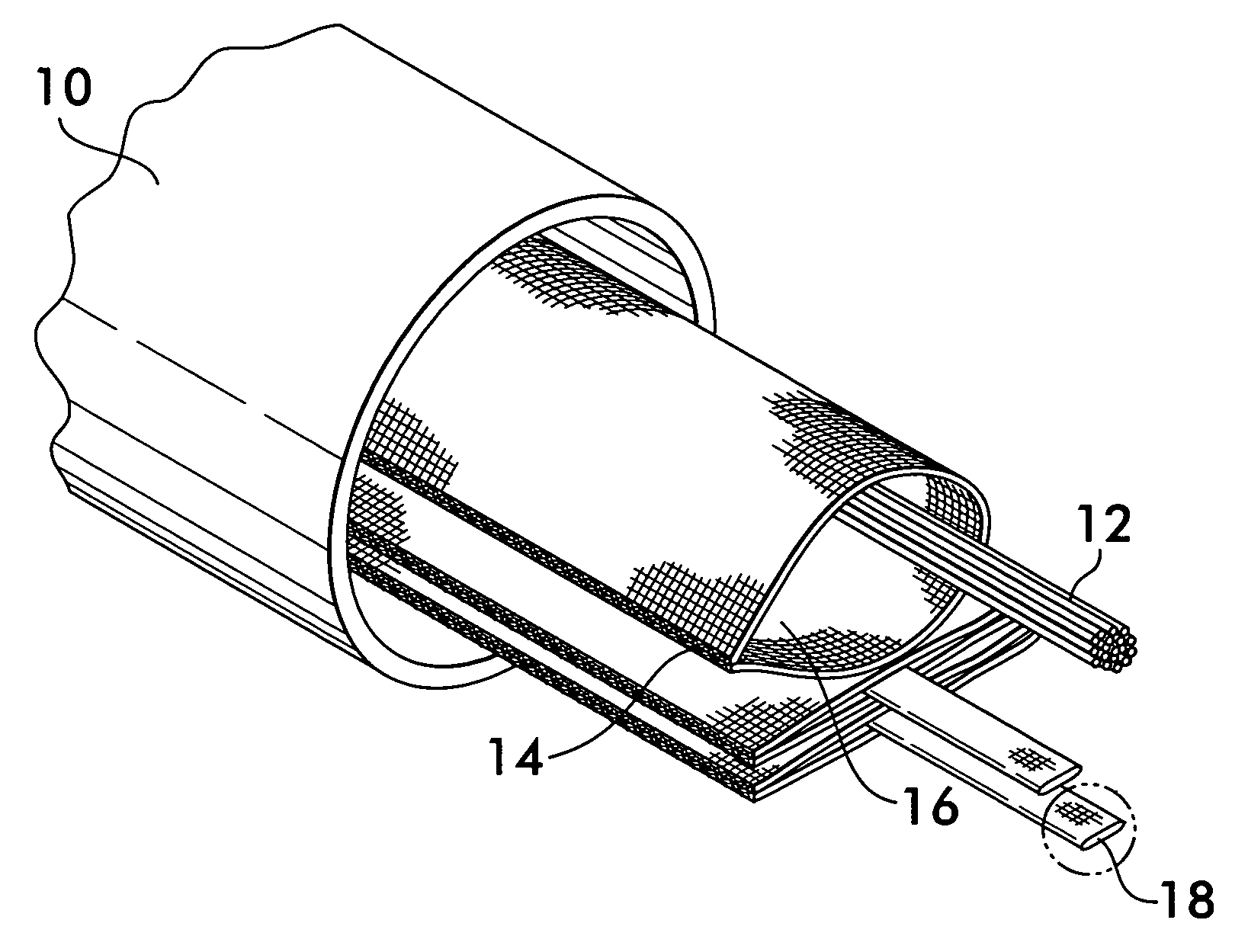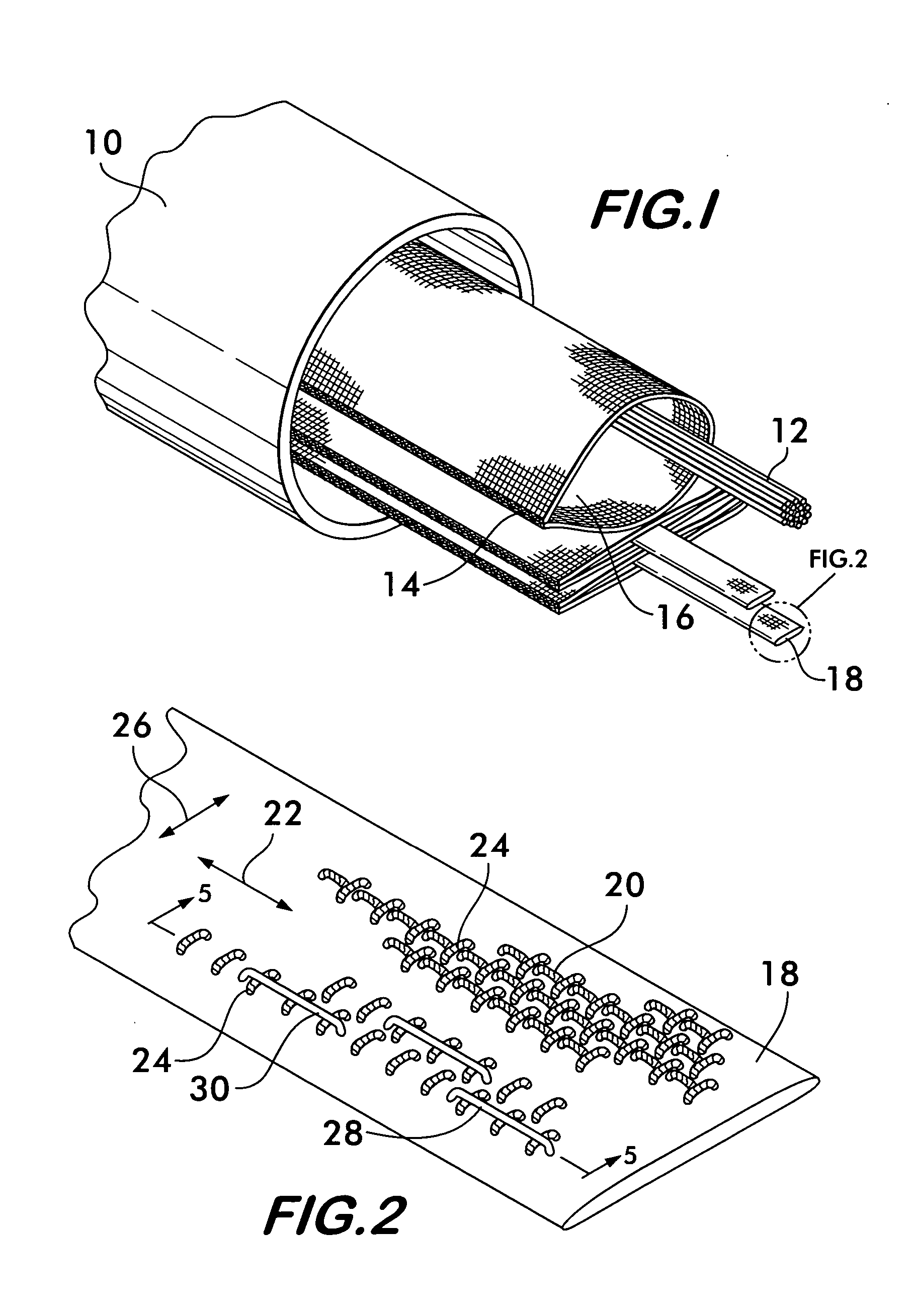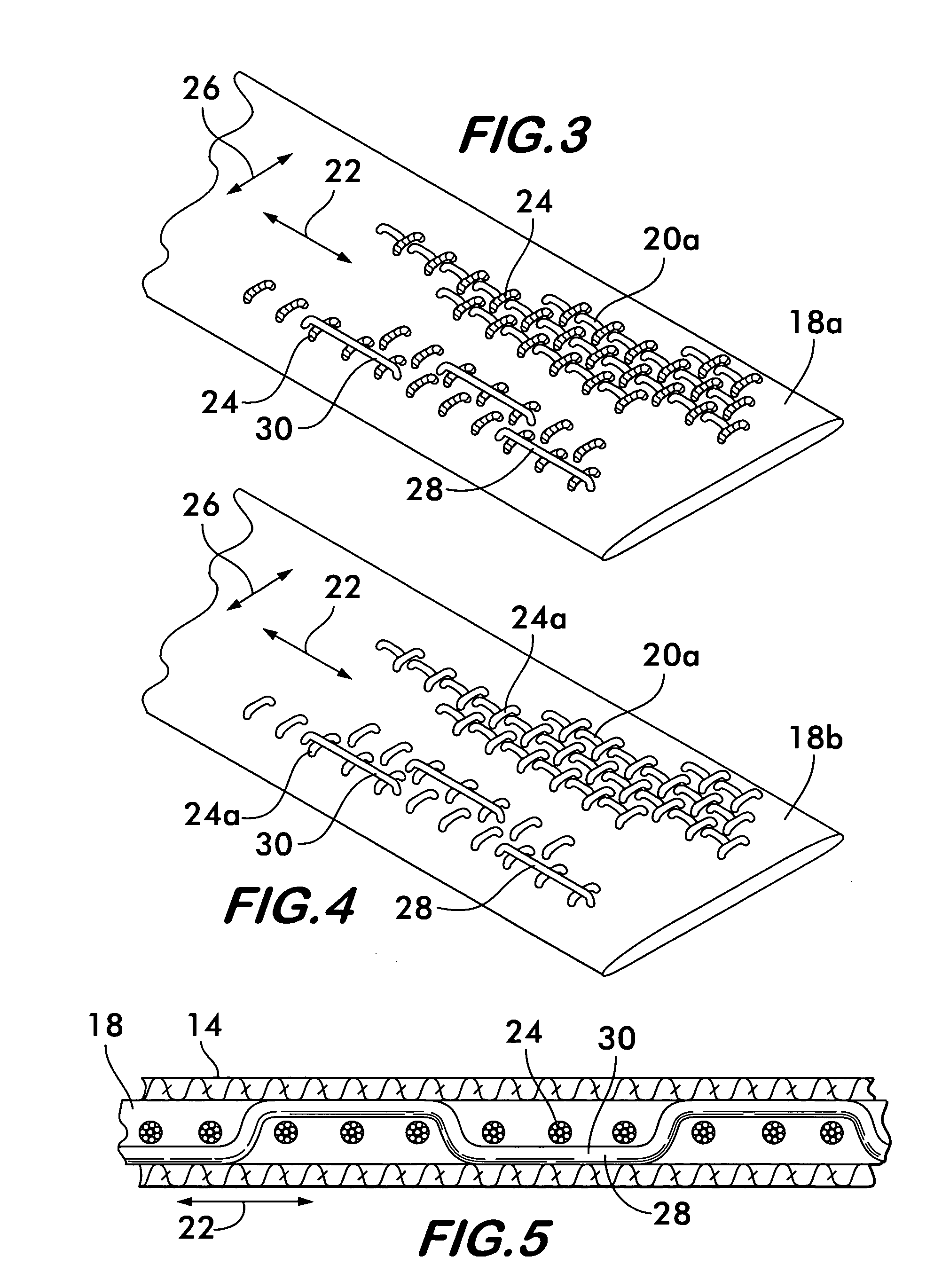Low-friction pull tape
a pull tape and low friction technology, applied in the field of pull tapes, can solve the problems of difficult positioning of cables within, woven or braided pull tapes encountering significant friction, and the drawing of items through the conduit requires considerable tensile force, so as to reduce friction between the pull tape and the sleev
- Summary
- Abstract
- Description
- Claims
- Application Information
AI Technical Summary
Benefits of technology
Problems solved by technology
Method used
Image
Examples
Embodiment Construction
[0016]FIG. 1 shows a conduit 10 for protecting elongated items 12, the elongated items shown schematically representing a wiring harness, a power cable, optical fiber cables or other similar items. A plurality of protective sleeves 14 are positioned within the conduit 10. Sleeves 14 extend over the entire length of the conduit and receive the elongated items 12 within an interior space 16. The sleeves protect the elongated items from abrasion when they are drawn through the sleeve during installation within the conduit 10 and also help organize the space within the conduit, allowing for its efficient use. A pull tape 18 is positioned within each sleeve 14. The pull tape facilitates installation of elongated items 12 within the sleeve. To effect installation, one end of the pull tape is attached to the elongated item and the opposite end is manually pulled or attached to a power winch which draws the pull tape, and consequently, the elongated item through the sleeve, the elongated it...
PUM
| Property | Measurement | Unit |
|---|---|---|
| diameter | aaaaa | aaaaa |
| diameter | aaaaa | aaaaa |
| diameter | aaaaa | aaaaa |
Abstract
Description
Claims
Application Information
 Login to View More
Login to View More - R&D
- Intellectual Property
- Life Sciences
- Materials
- Tech Scout
- Unparalleled Data Quality
- Higher Quality Content
- 60% Fewer Hallucinations
Browse by: Latest US Patents, China's latest patents, Technical Efficacy Thesaurus, Application Domain, Technology Topic, Popular Technical Reports.
© 2025 PatSnap. All rights reserved.Legal|Privacy policy|Modern Slavery Act Transparency Statement|Sitemap|About US| Contact US: help@patsnap.com



